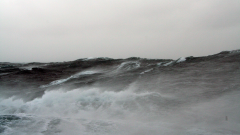Eutrophication
Eutrophication occurs when the enrichment of waters by nutrients (nitrogen and phosphorus) causes excessive growth of phytoplankton resulting in an undesirable disturbance of the marine ecosystem. Eutrophication is a problem if there is evidence of nutrient enrichment from human activity resulting in nutrient concentrations exceeding background concentrations. This enrichment could result in direct effects such as elevated chlorophyll concentrations and increased blooms and indirect effects such as oxygen deficiency and biomass changes.
Nutrient enrichment has been assessed by looking at nutrient inputs and winter nutrient concentrations while direct and indirect effects have been assessed by looking at chlorophyll during the phytoplankton growing season and dissolved oxygen in bottom waters during the summer months. To highlight the impacts of eutrophication as a consequence of nutrient enrichment on small estuaries Case Study: Opportunistic macroalgal blooms (Ythan estuary) highlights algal mat growth in the Ythan Estuary. Case study: Dissolved oxygen, application of novel technologies introduces the application of new technologies for dissolved oxygen assessments.
Monitoring of marine waters to assess Eutrophication status in the Scottish marine environment is required to enable Scotland to assess what measures and action are required in order to enable the Scottish vision of clean and safe seas to be delivered. In addition, such monitoring is required in order to ensure that Scotland fulfils its international obligations to OSPAR and under EU legislation.







